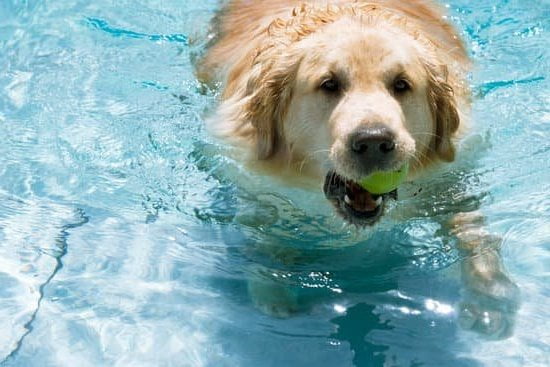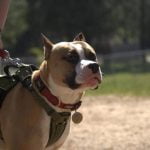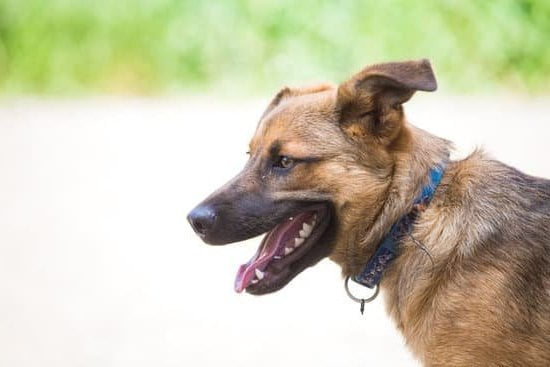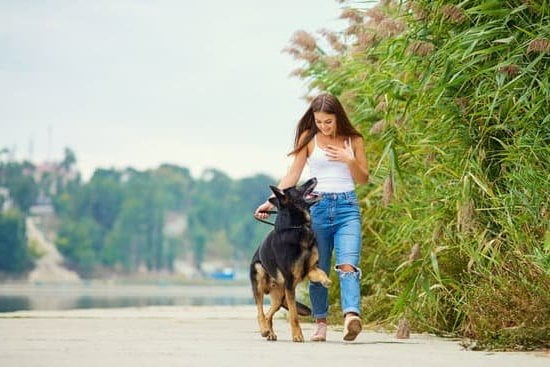Dog training for aggressive dogs is a crucial aspect of responsible pet ownership. Understanding the underlying causes of aggression in dogs and recognizing the signs are essential for addressing and managing this behavior. Whether it’s fear-based, territorial, or possessive aggression, professional help and positive reinforcement training methods play a significant role in modifying the behavior of aggressive dogs.
Recognizing the signs of aggression is the first step in addressing the issue. Aggressive behavior in dogs can manifest through growling, snarling, showing teeth, lunging, or even biting. It’s important to understand that aggression in dogs is often a symptom of an underlying problem such as fear, anxiety, or lack of socialization. Seeking professional help from a certified dog trainer or behaviorist who specializes in aggressive behaviors is crucial to effectively address and modify this behavior.
Positive reinforcement training methods have been proven to be highly effective in modifying aggressive behavior in dogs. By rewarding desired behaviors with treats, praise, and affection, while ignoring or redirecting undesirable actions, aggressive dogs can learn new ways to interact with their environment and people. Teaching proper socialization skills and providing structured, positive experiences are also important aspects of training aggressive dogs to become more confident and comfortable around other animals and people.
By understanding the root causes of aggression in dogs and seeking professional guidance for training, pet owners can successfully manage and prevent aggressive behaviors. Building trust and bond with an aggressive dog through consistent training, patience, and understanding is essential for creating a harmonious relationship between the dog and its owner.
Recognizing the Signs of Aggression
Aggression in dogs can manifest in various ways, and it is important for dog owners to be able to recognize the signs early on. By being able to identify these signs, owners can take the necessary steps to address the behavior and seek professional help if needed. Here are some common signs of aggression in dogs:
- Growling or snarling
- Biting or snapping
- Stiff body language
- Showing teeth
- Intense staring
If you observe any of these behaviors in your dog, it is crucial to address them promptly. Ignoring these signs or dismissing them as normal behavior can lead to more serious issues down the line.
Seeking professional help in dog training for aggressive dogs is crucial when dealing with potentially dangerous behavior. A certified dog trainer or animal behaviorist can provide the expertise and guidance needed to safely and effectively modify aggressive behavior in dogs. Additionally, they can assess the underlying causes of aggression and tailor a training plan that suits the individual needs of each dog.
Moreover, it is important for dog owners to understand that aggression in dogs is not always a result of malicious intent. In many cases, aggressive behavior stems from fear or anxiety. By addressing these underlying emotions and using positive reinforcement training methods, it is possible to modify this behavior and teach proper socialization skills to aggressive dogs. With patience, consistency, and professional guidance, an aggressive dog can learn to trust and build a healthy bond with their owner.
The Importance of Professional Help in Training Aggressive Dogs
Aggression in dogs can be a serious issue that requires professional help and guidance to address effectively. While some pet owners may attempt to manage this behavior on their own, it is crucial to understand the importance of seeking out professional assistance when dealing with aggressive dogs.
Understanding the Root of Aggression
Before diving into dog training for aggressive dogs, it is important to first understand the root cause of the aggression. Working with a professional trainer or behaviorist can help identify the underlying reasons behind the aggressive behavior, whether it be fear, territorial instincts, or lack of socialization. By understanding the “why” behind the aggression, pet owners and trainers can develop a targeted and effective training plan to address these issues.
The Role of Professional Trainers
Professional trainers have the knowledge and experience to handle aggressive dogs in a safe and effective manner. They are trained in recognizing different levels of aggression and can provide personalized training plans tailored to each dog’s specific needs. Additionally, they can offer valuable guidance on using positive reinforcement methods and implementing proper socialization techniques to gradually improve an aggressive dog’s behavior.
Creating a Safe Environment
A professional trainer can also advise on creating a safe environment for both the dog and those around them. They can provide guidance on managing and preventing aggressive behaviors while ensuring the safety of everyone involved. Furthermore, they can offer support in addressing any fear or anxiety-related issues that may be contributing to the dog’s aggression, ultimately working towards building trust and a strong bond through patience and consistent training efforts.
Seeking professional help for dog training for aggressive dogs is essential in addressing aggression effectively while ensuring the safety and well-being of both the pet owner and their dog. With expert guidance, pet owners can work towards reducing aggressive behaviors through positive reinforcement techniques and proper socialization skills, ultimately fostering a trusting relationship with their furry companion.
Positive Reinforcement Training Methods for Aggressive Dogs
When it comes to dog training for aggressive dogs, positive reinforcement is a highly effective method. This involves rewarding and praising your dog for displaying the desired behavior, rather than punishing them for undesirable actions. Positive reinforcement helps build trust and confidence in your dog, which can be especially helpful for aggressive dogs who may have fear or anxiety issues.
One common positive reinforcement technique is clicker training, where a clicking sound is used to mark the exact moment your dog performs a behavior you want to reinforce. This is followed by a reward such as treats or verbal praise. Another method is using a form of operant conditioning known as “shaping,” which involves breaking down the desired behavior into smaller steps and gradually rewarding your dog as they progress.
It’s important to remember that every dog is unique, so it’s crucial to tailor the training methods to suit your individual dog’s needs. In some cases, seeking professional help from a certified dog trainer who specializes in working with aggressive dogs may be necessary to ensure that the training methods are effective and safe for both the dog and the owner.
| Training Method | Description |
|---|---|
| Clicker Training | A method that uses a clicking sound to mark desired behavior, followed by a reward. |
| Shaping | Breaking down the desired behavior into smaller steps and rewarding progress. |
Teaching Proper Socialization Skills to Aggressive Dogs
A critical aspect of dog training for aggressive dogs is teaching them proper socialization skills. Socialization is the process of exposing a dog to new people, animals, environments, and experiences in a positive and controlled manner. It helps the dog become comfortable and confident in various situations, reducing their likelihood of reacting aggressively.
Understanding the Importance of Socialization
Proper socialization is crucial for aggressive dogs because it helps them learn to interact with others without showing fear or aggression. When an aggressive dog is properly socialized, they are less likely to feel threatened or anxious in unfamiliar situations, reducing the risk of aggressive behavior.
Socialization Techniques for Aggressive Dogs
When socializing an aggressive dog, it’s essential to start with small steps and gradually expose them to new stimuli. This may involve introducing them to calm and friendly dogs in controlled environments, allowing positive interactions while closely monitoring their behavior. Additionally, exposing the dog to different environments and experiences can help desensitize them and build confidence.
Professional Guidance for Socialization
Given the potential risks associated with socializing an aggressive dog, seeking professional help is highly recommended. A qualified trainer or behaviorist can provide guidance on how to safely and effectively socialize an aggressive dog. They can also tailor a training plan that addresses the specific needs and triggers of the individual dog, ensuring a more successful outcome.
Overall, teaching proper socialization skills to aggressive dogs requires patience, consistency, and expert guidance. With gradual exposure and positive reinforcement techniques, aggressive dogs can learn to coexist peacefully with other animals and people, improving their overall well-being and quality of life.
Managing and Preventing Aggressive Behavior in Dogs
Aggression in dogs can be a serious issue that requires careful management and prevention. Understanding the root cause of aggression in dogs is crucial in addressing and preventing aggressive behavior. It’s important to recognize that aggression can manifest in different ways, such as fear-based, territorial or possessive aggression, and understanding these signs can help in managing and preventing aggressive behavior.
Professional help plays a vital role in managing and preventing aggressive behavior in dogs. A certified dog trainer or animal behaviorist can assess the underlying causes of aggression and create a customized training plan for the dog. They can also provide guidance to the dog owner on how to effectively manage and prevent aggressive behavior in their pet. Seeking professional help is essential in ensuring the safety of both the dog and its owners.
Using positive reinforcement training methods is highly effective in managing and preventing aggressive behavior in dogs. This training approach focuses on rewarding good behavior rather than punishing bad behavior, which helps build trust between the dog and its owner. Positive reinforcement training also teaches the dog alternative behaviors to replace its aggressive tendencies, ultimately reducing and managing its aggressive behavior over time.
| Training Methods | Effectiveness |
|---|---|
| Positive Reinforcement | Highly Effective |
| Punishment-Based Training | Less Effective |
Addressing Fear and Anxiety in Aggressive Dogs
Aggressive behavior in dogs can often stem from fear and anxiety. Addressing these underlying emotions is crucial in dog training for aggressive dogs. It is important to understand that aggression in dogs is not always a result of their natural temperament, but can be a response to their environment or past experiences.
Recognizing the signs of fear and anxiety in aggressive dogs is the first step in addressing this issue. Some common signs include trembling, excessive panting, avoidance behavior, and even aggression when feeling threatened. It is important to closely monitor your dog’s body language and behavior to identify these signs.
To address fear and anxiety in aggressive dogs, it is highly recommended to seek professional help from a certified dog trainer or behaviorist. These professionals have the expertise and experience to develop a customized training plan tailored to your dog’s specific needs. They can also provide guidance on how to create a safe and supportive environment for your dog at home.
In addition to seeking professional help, there are several positive reinforcement training methods that can be used to address fear and anxiety in aggressive dogs. This includes desensitization exercises, counter conditioning, and reward-based training techniques. Creating a structured training routine with consistent rewards can help build trust and confidence in your dog while addressing their fears and anxieties.
Building Trust and Bond With an Aggressive Dog Through Training and Patience
In conclusion, training aggressive dogs requires a deep understanding of the root causes of their aggression and recognizing the signs of aggressive behavior. It is important to seek professional help in training aggressive dogs, as they require specialized knowledge and techniques to address their specific needs. Positive reinforcement training methods have been found to be effective in modifying aggressive behavior in dogs, while also promoting a healthy bond between the dog and its owner.
Proper socialization skills are essential for aggressive dogs to learn how to interact with other animals and people safely. This can be achieved through gradual exposure to different environments and positive experiences. Additionally, managing and preventing aggressive behavior in dogs involves creating a consistent and structured environment for the dog, while addressing any fear and anxiety that may contribute to their aggression.
Building trust and a strong bond with an aggressive dog takes time, patience, and dedication. By using positive reinforcement techniques and providing consistent training, owners can build a strong relationship based on trust with their dog. Ultimately, with the right approach and guidance, even the most aggressive dogs can become well-behaved companions through proper training and support in addressing their specific needs.
Frequently Asked Questions
Can Dog Aggression Be Trained Out of a Dog?
Dog aggression can be trained out of a dog to some extent, but it largely depends on the underlying causes and the severity of the aggression. Professional trainers can help with behavior modification and desensitization techniques.
What Is the Best Training for an Aggressive Dog?
The best training for an aggressive dog typically involves positive reinforcement methods, consistency, and patience. Obedience training, impulse control exercises, and socialization under controlled conditions are key components in addressing aggressive behavior.
How Do You Fix a Dog That Is Dog Aggressive?
Fixing a dog that is dog aggressive requires a combination of management, training, and possibly seeking professional help. Avoiding trigger situations, using counter-conditioning techniques, and implementing a structured training program can help modify the dog’s behavior over time. It’s important to address the root cause of the aggression rather than just suppressing the symptoms.

Welcome to the blog! I am a professional dog trainer and have been working with dogs for many years. In this blog, I will be discussing various topics related to dog training, including tips, tricks, and advice. I hope you find this information helpful and informative. Thanks for reading!





